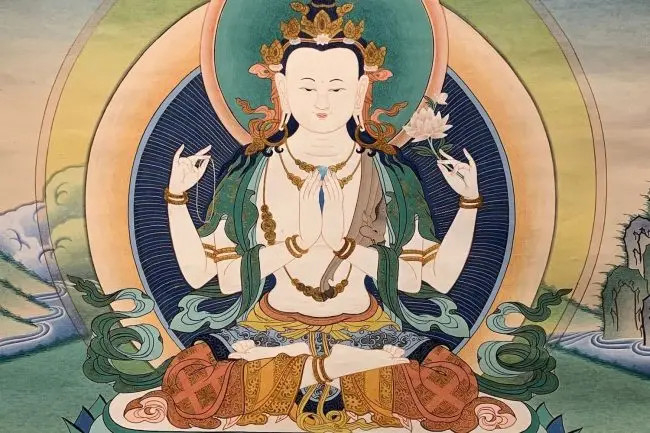The Great Compassion Mantra
The Great Compassion mantra, also known as the "Da Bei Zhou" or "Dharani of Great Compassion," originates from the Mahayana Buddhist scripture called the "Great Compassion Dharani Sutra." This powerful mantra is revered for its profound meaning and numerous benefits.
Meaning of the Great Compassion mantra: The mantra is dedicated to Avalokiteshvara, the Bodhisattva of Great Compassion, and invokes the qualities of enlightenment and compassion of all Buddhas and Bodhisattvas.
The Great Compassion mantra is a Sanskrit dharani that is often chanted as "Namo Ratna Trayaya, Namo Arya Jnana Sagara, Vairochana, Byuhara Jara Tathagataya, Arahate, Samyaksam Buddhaya, Namo Sarwa Tathagate Bhyay, Arhata Bhyah, Samyaksam Buddhe Bhyah, Namo Arya Avalokite shoraya Bodhisattvaya, Maha Sattvaya, Maha Karunikaya, Tadyata, Om Dara Dara, Diri Diri, Duru Duru Itte We, Itte Chale Chale, Purachale Purachale, Kusume Kusuma Wa Re, Ili Milli, Chiti Jvalam, Apanaye Shoha.
Benefits of the Great Compassion mantra:
- Cultivating Compassion: Chanting this mantra fosters a deep sense of compassion and loving-kindness towards all beings, promoting empathy and interconnectedness.
- Purification and Blessings: The mantra purifies negative karma and brings blessings from enlightened beings, leading to positive transformations in one's life.
- Protection from Harm: Practicing the Great Compassion mantra offers protection from physical and spiritual dangers, dispelling negative energies and malevolent forces.
- Overcoming Obstacles: The mantra helps practitioners overcome various obstacles, challenges, and difficulties on their spiritual path.
- Healing and Peace: Chanting this mantra is believed to have healing effects on the body and mind, promoting inner peace and well-being.
- Liberation from Suffering: By invoking the Bodhisattva's compassionate energy, the mantra guides beings towards liberation from suffering and cyclic existence.
Regular recitation of the Great Compassion mantra is considered a profound and transformative practice, bringing practitioners closer to the enlightened qualities of Avalokiteshvara and, ultimately, the path of enlightenment.
















